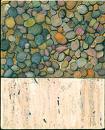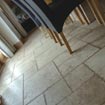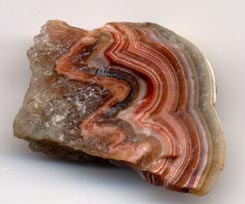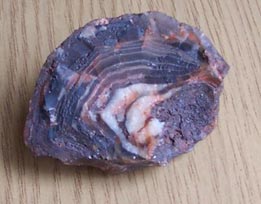Shipping
Ordering an item from ISC ? We can ship to virtually any address in the world.
Delivery TimeWhen you place an order withISC, we will estimate shipping and delivery dates for you, based on the availability of your items and the shipping options you choose.
Shipping containers, please allow approximately 6 weeks for delivery, due to production schedules, availability, and vessel shipping dates. Calculating CostShipping costs for orders from ISC depend upon the shipping methods, quantity of product, and shipping origin.
Pallet shipments will vary based on the area of the country you live or conduct business. We work with several trucking companies and search for the best price for your shipment at the time of order. If you would prefer to have your own shipping company deliver the shipment just let us know at the time of your purchase.
Container shipments will vary based upon the weight of the shipment, the FOB origin, and your physical location. If you would prefer to use your own shipping company, please let us know at the time of your purchase.
Please also note that shipping rates for many items we sell are container-based.
Travertine Info



Travertine's Appearance

Travertine Applications:
From small mosaics to large slabs, travertine stone tiles are used for:Kitchen Floors
Kitchen Backsplashes
Counters
Entryway Floors
Interior Walls
Outdoor Walls
Fireplace Surrounds
Bathroom Floors
Bathroom Walls and Backsplashes
Tub Surrounds
Outdoor Patios and Walkways
Travertine is also used in making statues, sinks, vanities, tables, coasters and other decorative items.Grouting Travertine:

Sealing and Cleaning Travertine:

Caution: When cleaning your travertine floors do not use vinegar, an acidic or an abrasive cleaner, so as not to scratch or discolor it. Make sure you wipe up spills as soon as they happen. Sweep or dust mop the floors frequently and mop the floors with a neutral cleaner or a stone soap. Rinse and dry the tile after using the soap.
Choosing a material

We do not stock 2nd choice quality as the quality is so variable, many of the cheap offers on this material fall into this category (but they are not going to tell you that are they?) It is possible for holes to appear in filled Travertine usually when they are on the floor and in relative high traffic areas. This is usually caused by the filling breaking down. It’s not as bad as it sounds but it can happen regardless of the quality of material although the better materials have less filling so this is consequently minimized. These voids can be filled using a suitable Grout or an Epoxy Resin. The easy method is to simply fill the void with a matching grout usually the same as was used between the tiles when they were fixed. It is impossible to guarantee that voids will never occur with filled tiles.
As with all natural materials shade and surface appearance can vary quite considerably however the larger the area the less noticeable this becomes and in many cases it is desirable as a feature of this type of material.
If your project is for a reasonable area its worth taking the time to have a look at the actual material you are considering as it is impossible to choose correctly from a sample tile.
Types of finish for Travertine tiles
Polished Available only with filled tiles
Honed Available in either filled or unfilled
Brushed A textured finish available unfilled tiles only
Tumbled This process of involves acidic based chemicals at the factory level and/or the use of a tumbling machine that "antiques" the stone to give the appearance of a weathered, antique look in the stone, with softened edges.Antiqued Acid washed to create the tumbling effect, then brushed to "smooth" the surface.
Bush hammered - tiny pins are "hammered" on the surface of the stone to create a coarse, slip resistant texture on the surface.
Sandblasted - This process creates a coarse, but consistent surface often used for slip-resistant applications, or other decorative designs.
Natural Cleft - Most commonly associated with slate, the tiles are cleft naturally from the blocks to create natural ridges in the surface. In most cases, natural cleft slate products will be gauged (or milled) on the underside for easy installation, but the natural cleft will be evident on the exposed surface.
Split Face (or Rock Face) - This process involved splitting stone with a guillotine like machine to create a look as if it was an exposed rock in nature, but processed in dimensions suitable for architectural settings.
Chiseled Hand or machine chiseled surfaces create a surface similar to the split face stone, but typically leave chisel marks in the surface (not on chiseled edge finishes though)
Marble Info
Marble is a nonfoliated metamorphic rock resulting from the metamorphism of limestone, composed mostly of calcite (a crystalline form of calcium carbonate, CaCO3). It is extensively used for sculpture, as a building material, and in many other applications. The word "marble" is colloquially used to refer to many other stones that are capable of taking a high polish.
Faux marble or faux marbling is a wall painting technique that imitates the color patterns of real marble (not to be confused with paper marbling). Marble dust can be combined with cement or synthetic resins to make reconstituted or cultured marble.
Places named after the stone include Marble Arch, London; the Sea of Marmara; India's Marble Rocks; and the towns of Marble, Minnesota; Marble, Colorado; and Marble Hill, Manhattan, New York. The Elgin Marbles are marble sculptures from the Parthenon that are on display in the British Museum. They were brought to Britain by the Earl of Elgin.




Onyx Info



ASTROLOGICAL RELATIONS
The onyx is the stone for the western zodiac sign, Leo, and the Chinese zodiac sign of the Ox. It can be many different colours, but the ones with the reddish brown colour is the preferred type. Onyx is said to banish grief, bring fortune to its possessor, bring recognition of personal strengths and increase regeneration, intuition and instincts. It is also thought to decrease sexual desire and help to change bad habits.Investment Law
LAW AND REGULATION OF INVESTMENT IN IRAN
Dear investors,
We are ready to share with you on investments in Iranian Stone Industries & Government will guarantee your capital & we guarantee to sale your products in advance which created from your investment.
We have 200,000 SQM stone inquiries per / year. Please contact us with info@iranstoneconsortium.com
Islamic Republic of Iran Ministry of Economic Affairs and Finance Organization for Investment, Economic and Technical Assistance of Iran (OIETAI)
Application for Investment under the Foreign Investment Promotion and Protection Act (Form 100-1)
Application for Investment under the Foreign Investment Promotion and Protection Act (Form 100-2)
Application for Investment under the Foreign Investment Promotion and Protection Act (Form 100-3)
Application for Investment under the Foreign Investment Promotion and Protection Act (Form 100-4)
Extracts from Iranian Tax Code
Law and Implementating Regulation Concerning Promotion and Protection of foreign Investment
